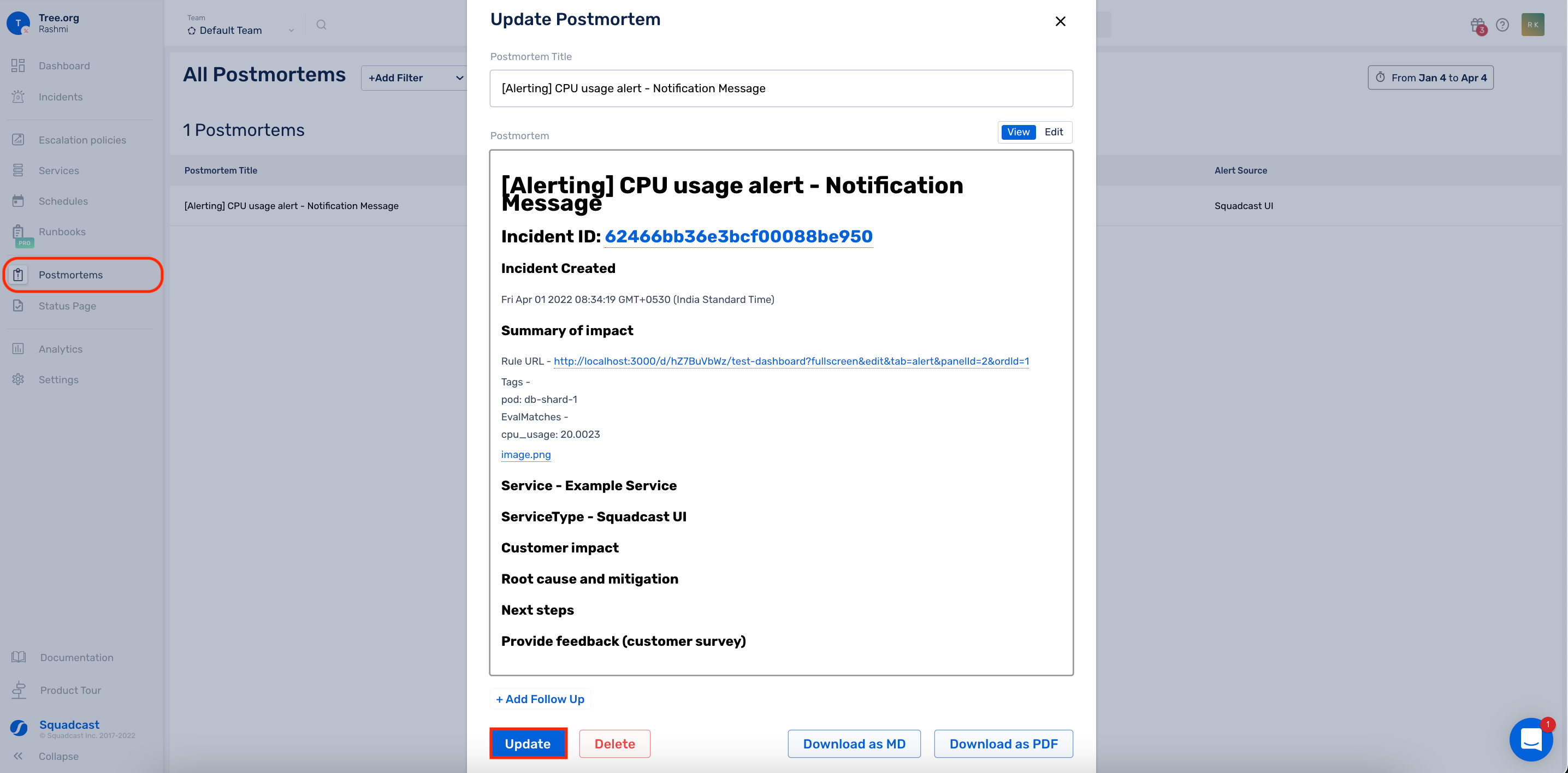Postmortems
Postmortems are a way to summarize the resolution for an incident once it is resolved. It is also a way for you to create a knowledge-base of failures and fixes that can be shared across your team to help build a culture of shared learning and learning from failures.
In this documentation, we’ll be going through how to create Postmortems.
Prerequisites
-
Ensure that the users of the Team have the right Roles (with the right permissions associated with the Postmortem entity) to be able to create and manage Postmortems
-
The Postmortem feature is enabled for an incident only after it has been resolved. Hence, an incident first needs to be resolved
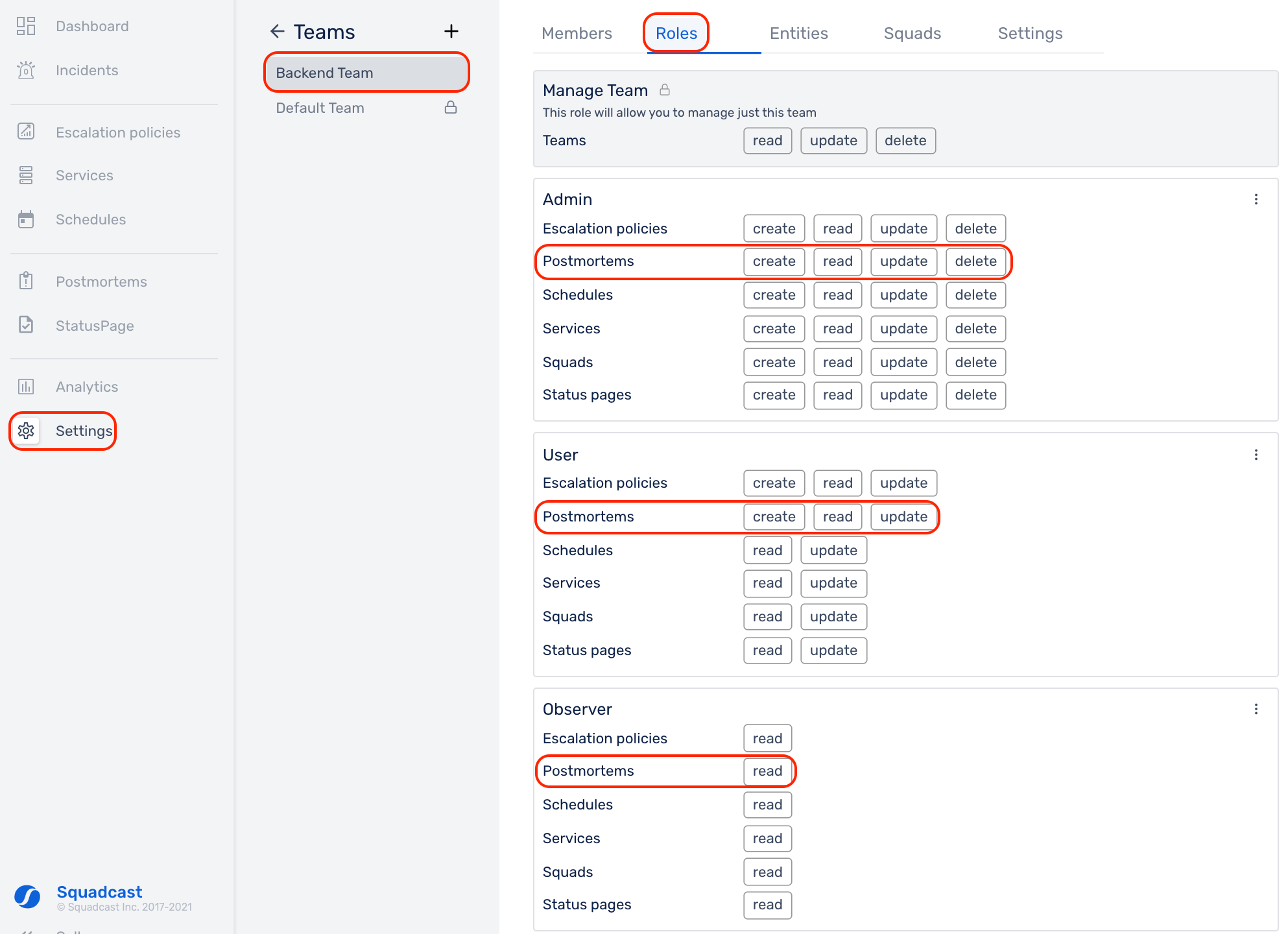
Creating a Postmortem
To create a Postmortem for a resolved incident:
(1) Navigate to the Incident Details page for the incident and click on Start Postmortem
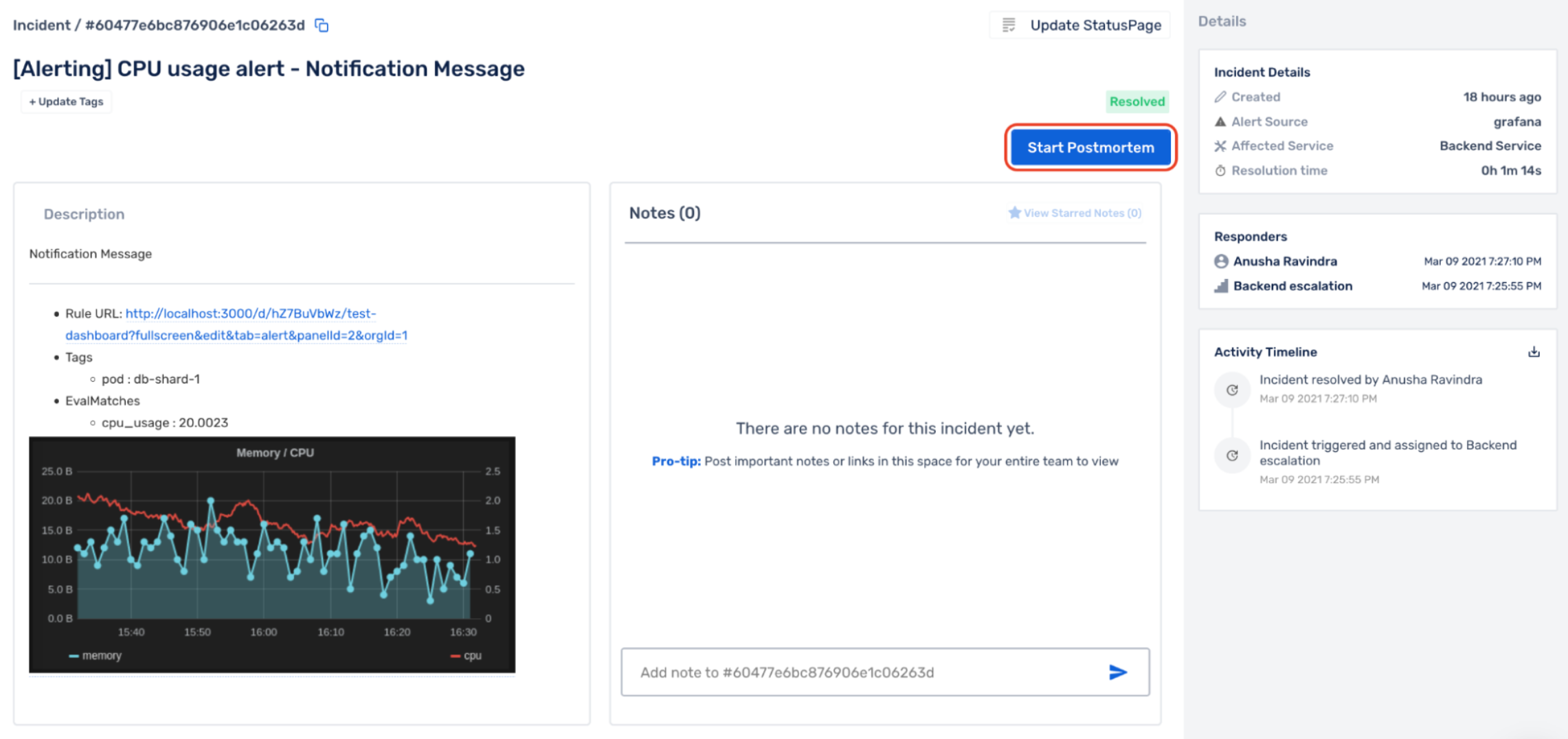
(2) You can select one of the Postmortem Templates from the drop-down
The Postmortem Title is auto-populated with your Incident Name as default. You can edit it, and start documenting the Postmortem.
Note: The incident-variables will get auto-populated as per the data available for that particular incident. Remaining details need to be manually filled by the user by Editing the Postmortem.
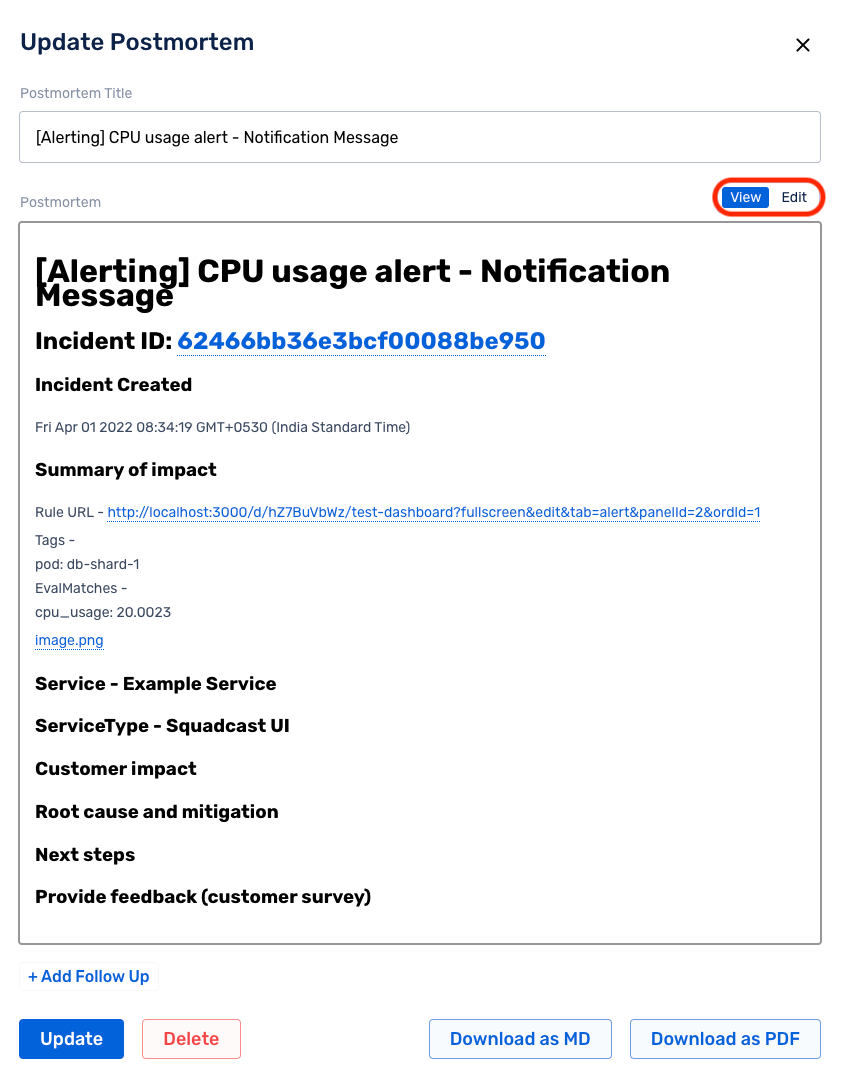
(3) Apart from the Markdown body in a Postmortem, you can also create a check-list of follow-ups that can be used to keep track of further actions that need to be done for that incident
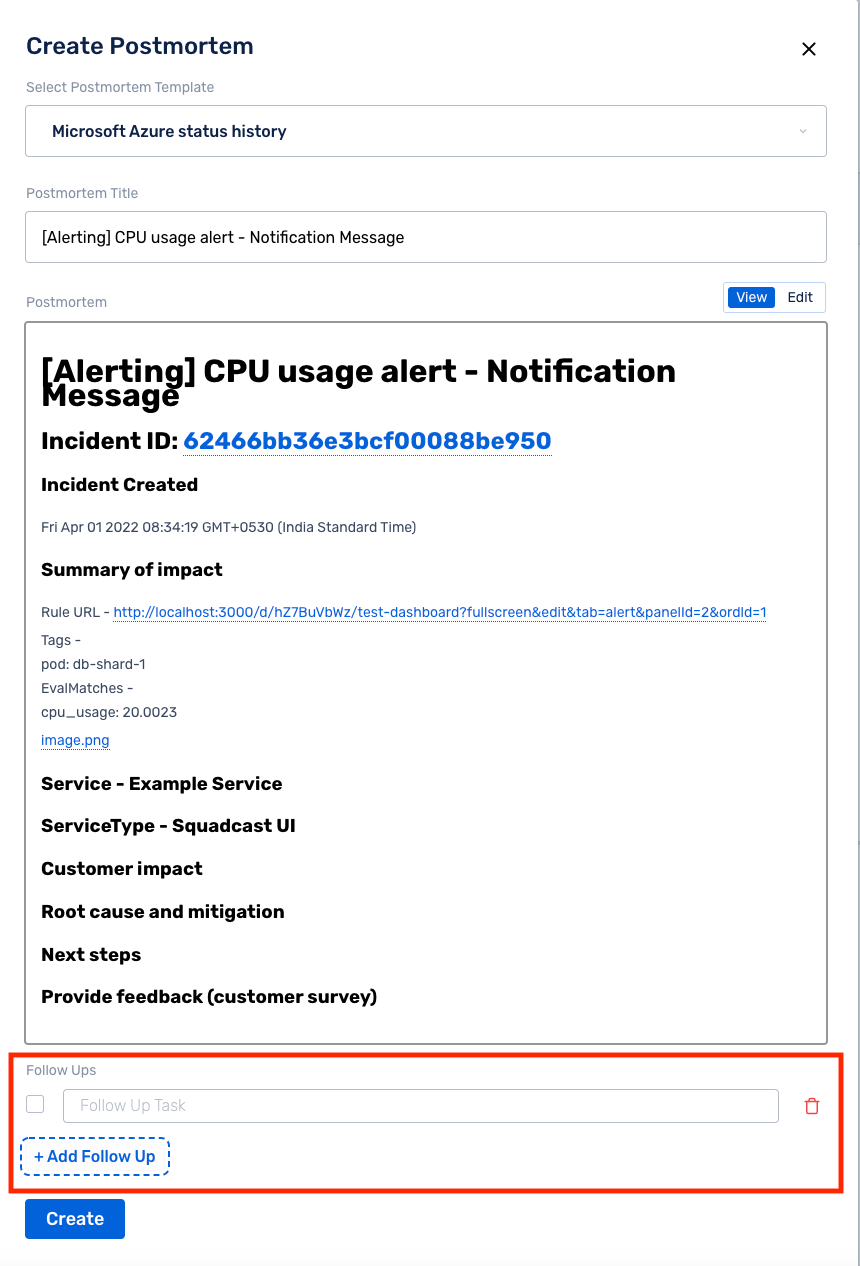
(4) Click on Create to save the Postmortem
(5) Once a Postmortem is created, any member of the Team with the right permissions can view and manage the Postmortem
Note: Once the Postmortem is created (and updated), it can be downloaded offline in either Markdown (MD) or PDF format.
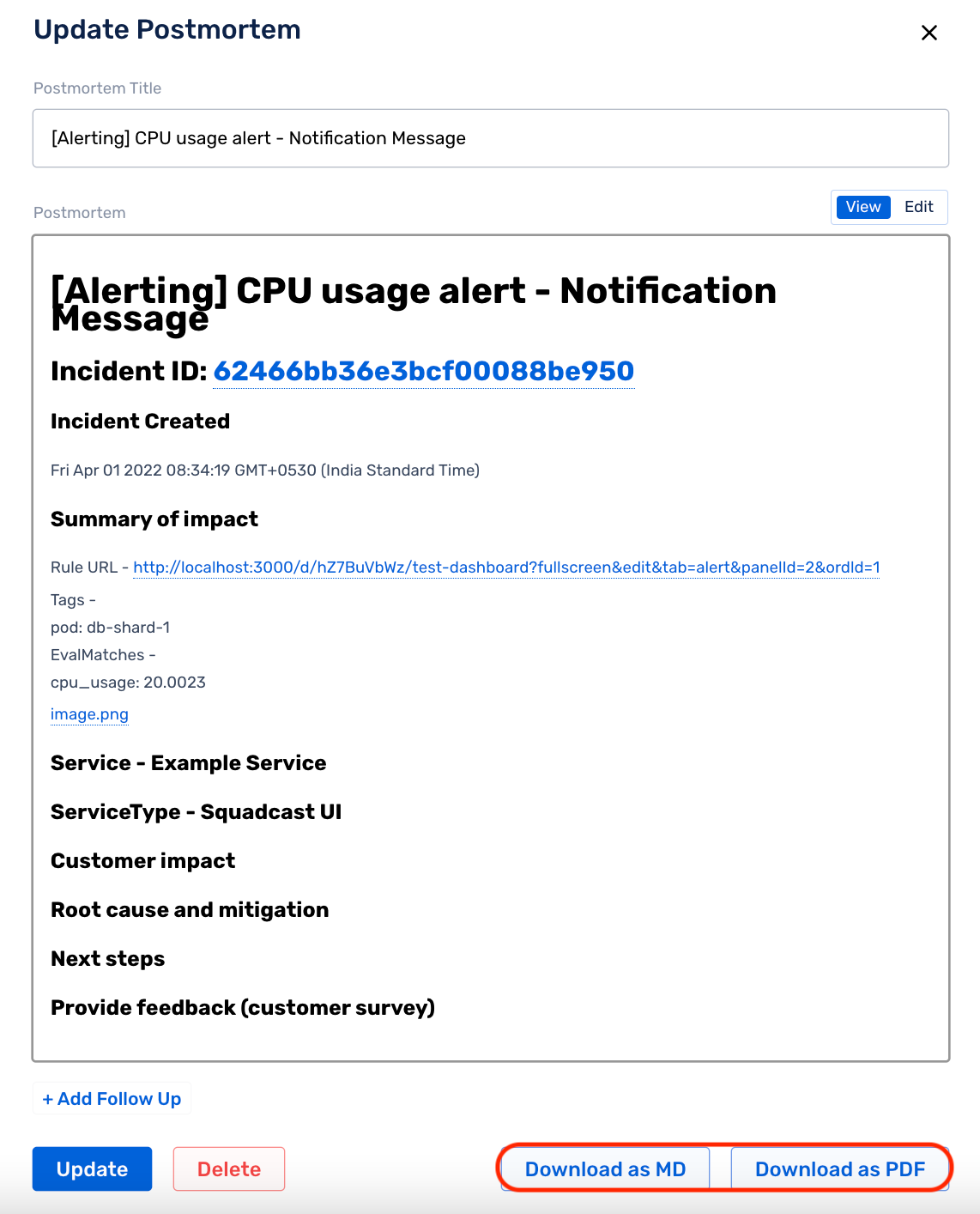
Adding Attachments
You can add a variety of file types as an attachment in the Postmortem of an incident.
To attach a file, drag and drop the file to the markdown editor. You can also copy-paste the file directly in the markdown editor.
The maximum size for a single single file is 10 MB (for upload). You can upload a maximum of 5 files at a time.
The storage limit for an organization depends on the plan:
- For Free plan - the limit is 50 MB
- For Pro and Enterprise plans - the limit is unlimited
File uploads won’t work if the plan limit has been reached. File once uploaded cannot be deleted.
The supported file types are:
- Images (.png, .jpg, .jpeg)
- Word Processors (.doc, .docx, .odt, pages)
- Spreadsheets (.xls, .xlsx, numbers)
- PDFs (.pdf)
- Presentations (.ppt, .pptx. .odp)
- Miscellaneous (.log, .txt, .odv, .csv, key, json, log)
Updating a Postmortem
We understand that conducting Postmortems and documenting it is an iterative process in some cases. In Squadcast, once a Postmortem is created, users with the right permissions can update the Postmortems as well.
There are 2 ways to do this:
(1) For an incident, head over to its Incident Details page and click on Update Postmortem. Switch to the Edit mode. Then, make the necessary modifications and click on Update
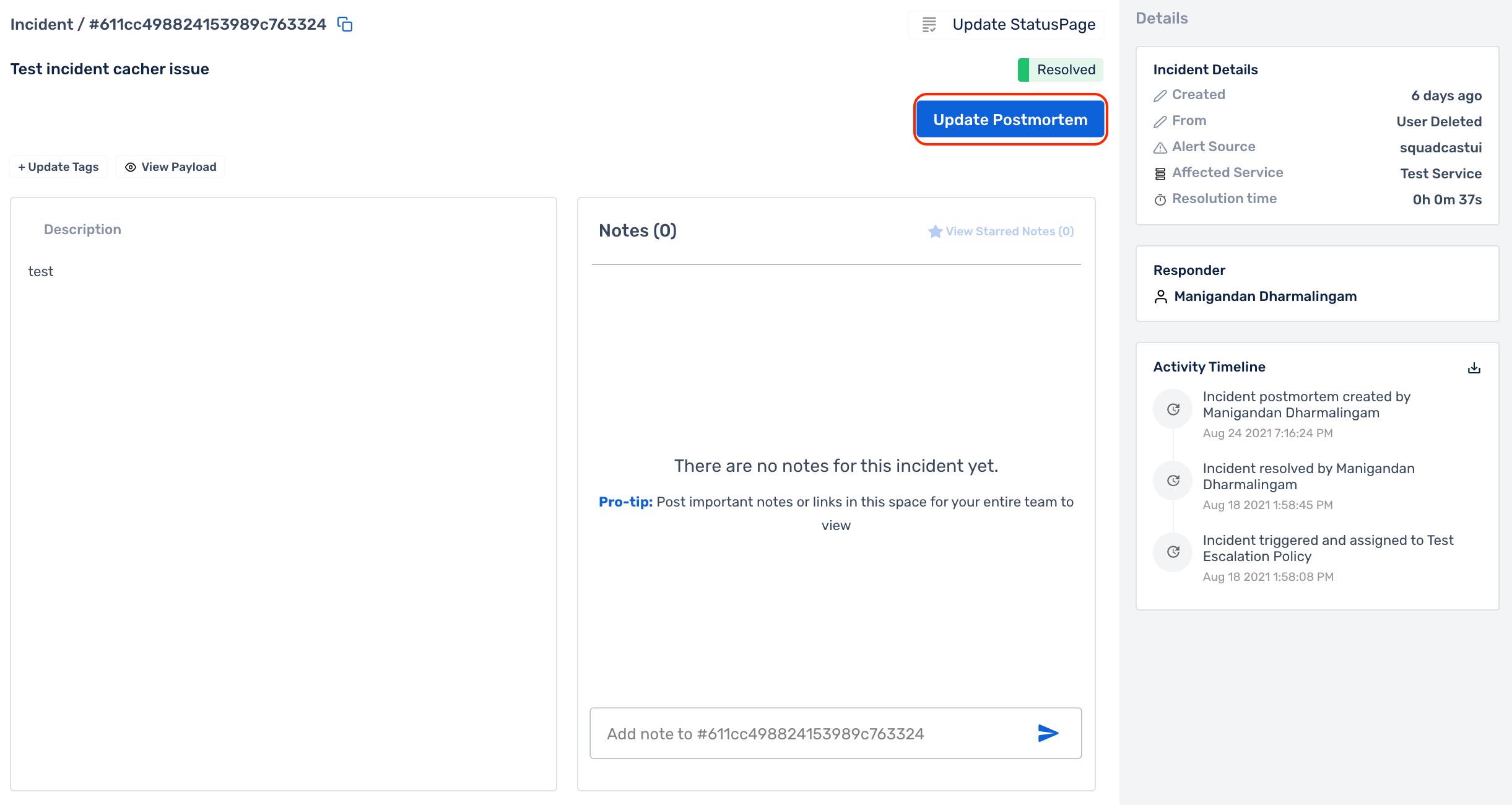
(2) Head over to Postmortems from the navigation on the left, scroll to the applicable Postmortem in the list. Click on the Edit icon, make the necessary changes and click on Update
